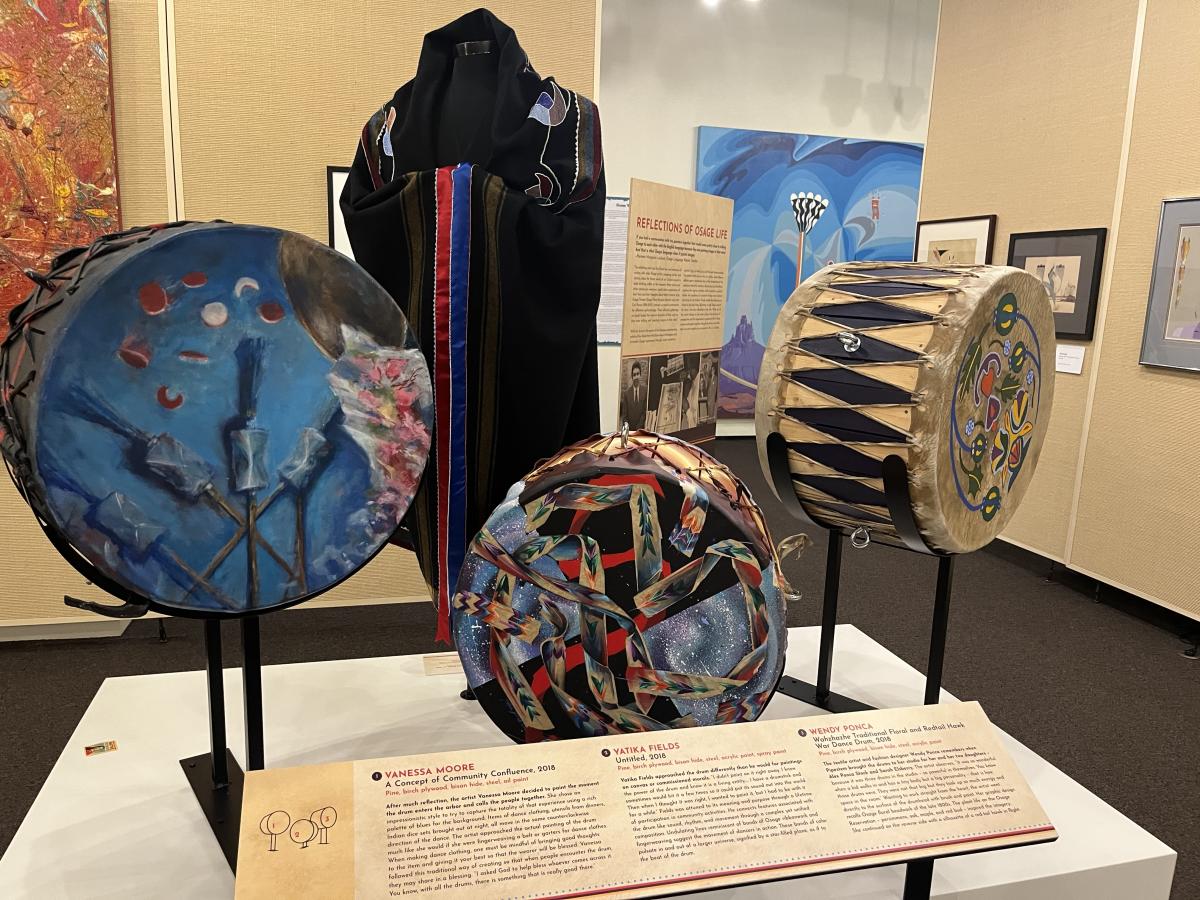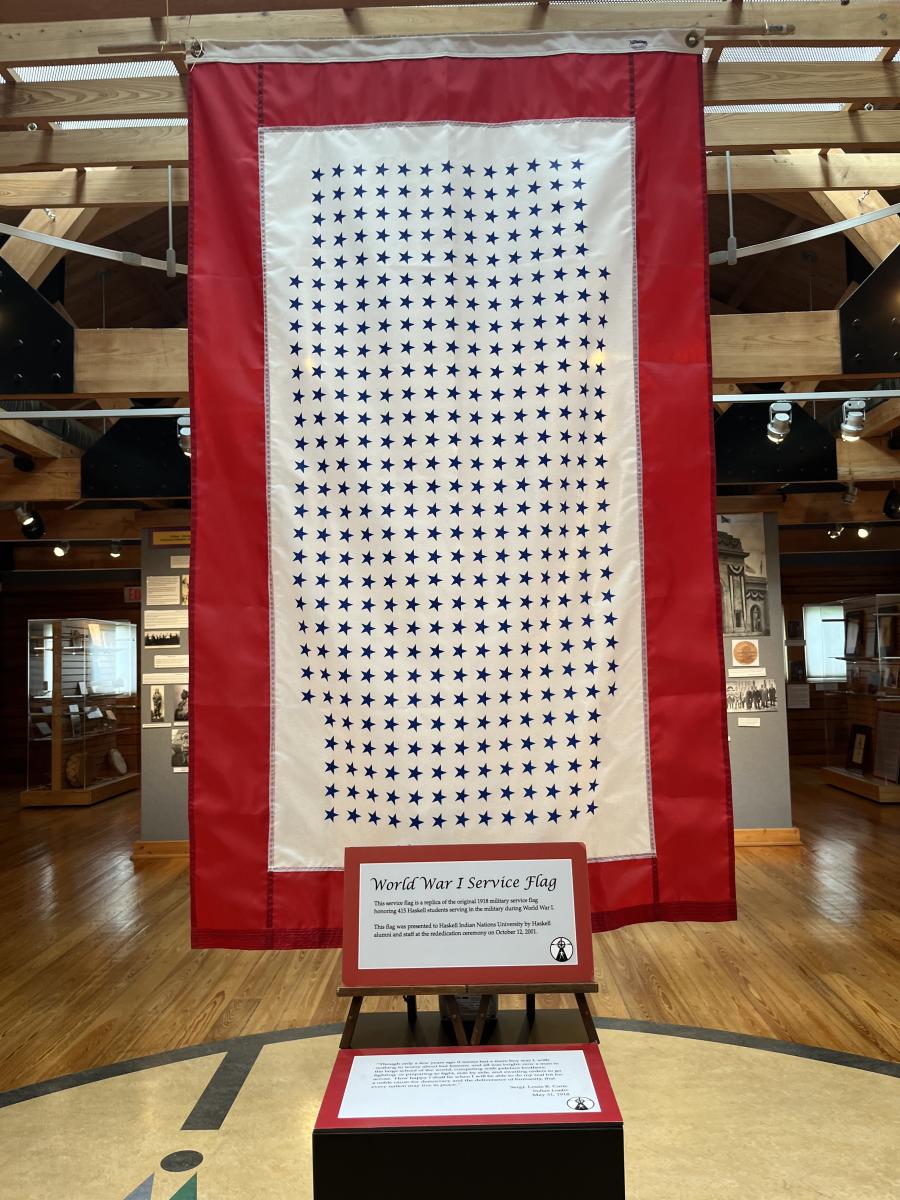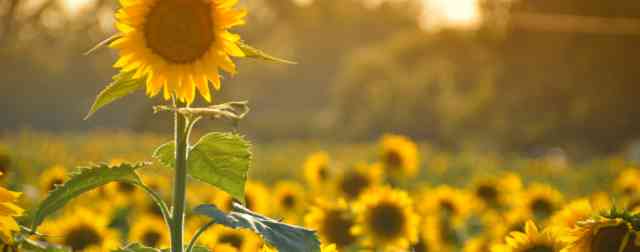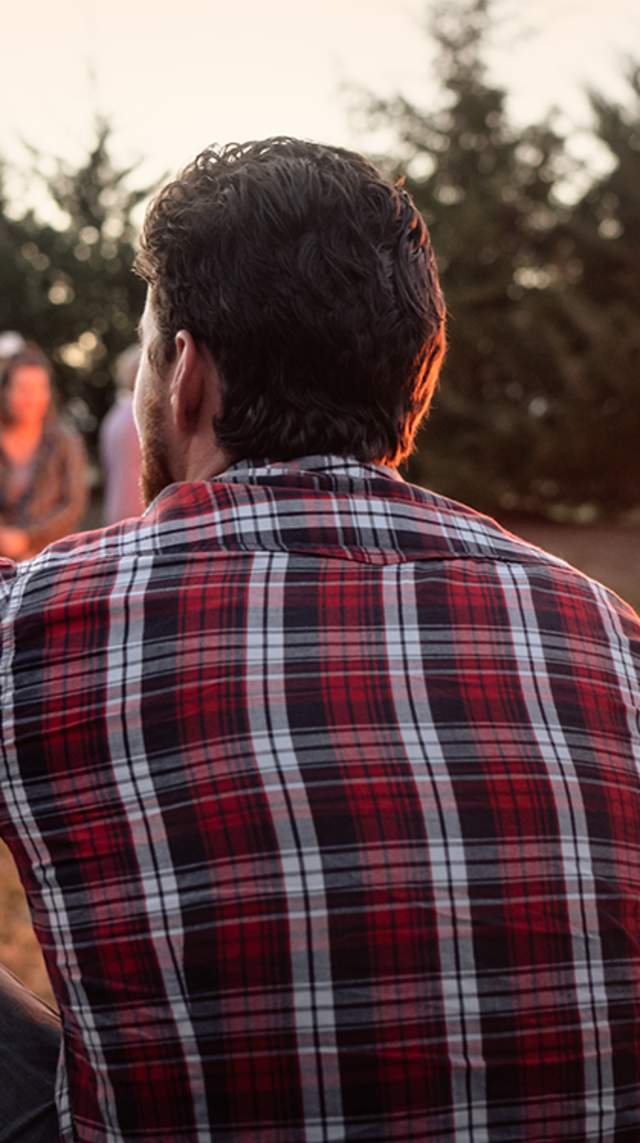Kansas is the homeland of a wide variety of native American tribes. For thousands of years, native tribes lived across the vast prairies passing down their traditions to each successive generation. Tribes such as the Pawnee, Osage, Kaw, Arapaho, Kiowa, Comanche, and Wichita are just a few of the many tribes that called Kansas home.
As the United States launched its westward expansion, many tribes were violently expelled from their eastern homelands. Federal policy often centered on resettling tribes into western territories, and over the course of the early 1800s eastern tribes were settled in Kansas. By 1830, nearly 30 tribes were expelled to Kansas including the Iowa, Ottawa, Sac and Fox, Shawnee, and Wyandot. In 1854 Kansas opened to white settlement, and tribes were once again forcibly resettled. Today Kansas is home to four reservations: the Iowa, Kickapoo, Potawatomi, and the Sac and Fox.
Through this hardship, however, the native presence in the state survived and today there are many sites across the state dedicated to preserving native culture and educating future generations.
1. Mid-America All-Indian Center
Back to Top of ListThe Mid-America All Indian Center was found in 1969 by Representatives from 11 tribes, with the museum opening its doors to visitors in 1976. Their goal was to establish a center that could educate the wider public about Native American history and culture along with helping to preserve Native culture.
Today, the interior of the museum is filled with Native artwork, ranging form ceremonial drums to colorful tapestries. Each artifact comes with its own story, with the desires of the artist beaming through the artwork itself.
One stunning art piece by Wendy Ponca used a ceremonial drum as its canvas. Ponca drew inspiration from Osage floral beadwork, that was in turn inspired by the plant life on the reservation - red buds, oaks, and maple trees
“It was so wonderful because it was three drums in the studio – so powerful in themselves. You know when a kid walks in and has a tiny body but a big personality – that is how those drums were. They were not that big but they took up so much energy and space in the room,” explained Ponca.

Decorated drums at the museum
Additionally, there are Native stone and flint tools on display, some dating back thousands of years. These artifacts are a slice of the lives of the people who lived here long before us which brings history to life for visitors.
One notable artist, Blackbear Bosin, is featured prominently with many of his gorgeous paintings exhibited. Blackbear’s name may sound familiar to Kansans as he was the visionary behind the famous “Keeper of the Plains” monument which stands just a short walk away from the center.
The center also hosts a variety of educational events for the public during the year, a list of which can be found here.
Mid-America All-Indian Museum
Housing a museum, a gallery of nations and a gift shop, the Mid-America All-Indian Museum educates and preserves the heritage of the American Indian. Experience a powwow, see traditional American Indian artifacts and…
2. Pawnee Indian State Historic Site
Back to Top of ListThroughout Northern Kansas and Nebraska, there were four separate bands of the Pawnee people; the Skiri, Chaui, Kitkahahki and Pitahawirata.
In the late 1700s, the Kathakali band settled along the Republican River in North Central Kansas. There the remains of one of their villages was excavated by archeologists between the 1940s and 1960s before being preserved as a museum.
The Pawnee people lived in dome Earth lodges, which ranged between 25 and 60 feet in diameter. In the center of the lodge there would be a fire pit, which was usually three to four feet in diameter.

The floor of the former Earthen lodge
Centered on a depression formed by one of these Earthen lodges, the state historic site displays the history of the Pawnee people in the state. This village had nearly a population of a thousand at its peak before being abandoned around 1830 once timber resources declined and the land became unproductive.
Visitors to the Pawnee Indian State Historic Site can learn about Pawnee social structure and the governance of their villages. Artifacts such as pottery and a sacred bundle are proudly displayed along with the tools Pawnee people used to survive.
In addition, visitors can learn more about the history of the tribe post-European contact. Many different trade items, such as muskets, are featured in the museum. The museum details the fate of much of the tribe as white settlers took over much of their land. Before widespread white settlement, there were around 60,000 members of the tribe, however their numbers rapidly declined due to disease and war with settlers. By 1873, there numbers were reduced to around 2,400.
Today’s Pawnee Nation is a federally recognized tribe that is based in Oklahoma.
Pawnee Indian Museum State Historic Site
Features exhibits on the culture of the Pawnee Indians by using a combination of information from archeological investigation and historic details. The museum surrounds an excavated Pawnee earth lodge from the 1820s…
3. Haskell College Cultural Center and Museum
Back to Top of ListHaskell Indian Nations University was founded in 1884 with educational programs focused on teaching children agricultural skills. Gradually, the began adding more advanced coursework starting with a normal school to train teachers. Throughout the mid-20th century, the school continued to grow with vocational courses and junior college courses being. In 1970 it became a Junior College and eventually became a four-year college in 1993.
Haskell has been a center of indigenous education for well over a century and its students represent tribes from across the United States. The museum and cultural center proudly display their history and the wide diversity of students that have walked the halls and pathways of the University.
Many of the exhibits focus on the athletic achievements of the university. A section is dedicated to the incredibly successful 1926 football team. One displays features two trophies from the 1926 relay team, one of the best in the nation. Wallace Little Finger, an Oglala Lakota from the Pine Ridge Reservation, is highlighted as one of the best runners on the team.
Additionally, there are tributes to the alumni of the university who went on to serve in the US military. In the center of the museum there is a flag commemorating the 415 Haskell students who served in World War I with a star representing every student. One memorial commemorates several students who served in the United States during the Vietnam War, and the large proportion of American Indians who served in the conflict relative to the rest of the population. One quarter of the eligible indigenous population served in the war, as opposed to one twelfth of the remaining population.

World War One service flag in the museum.
Other exhibits help educate visitors about the diversity of indigenous culture, showcasing the wide variety of traditions and beliefs that exist among the tribes. Today, stereotypes surrounding indigenous people remain present and many across native communities are working to promote their culture. One display features several pictures taken by native photographers featuring the indigenous people wearing their traditional clothing.
“There is a positive message in these photographs – that images can be manipulated in good ways, as well as bad. The eyes of the people in these portraits demand that we listen to their stories and learn from their experiences,” a passage states beneath a photograph.
Haskell Cultural Center
Haskell Cultural Center and museum celebrates the strength and resiliency of the students and their contribution to what today has grown to become Haskell Indian Nations University. Punctuating the re-emergence of…
Native American Heritage
Kansas is home to indigenous populations whose history is embedded in the very soil of the state. Learn about the culture, traditions, and…







